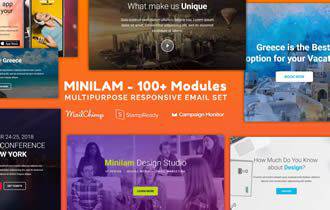When watching a great athlete perform, they often make it seem effortless. Demonstrating great speed, coordination and agility is just what they do. Yet, what our eyes don’t see is all of the hard work that went into making those amazing moments possible.
Similarly, a beautiful and highly-functional website can exude simplicity. But that belies the great effort made behind the scenes. A website must be conceptualized, designed, built and tested. None of these steps are exactly easy. Though an outstanding user experience makes it appear that way.
The difficulties in accomplishing this can frustrate designers and clients alike. When they see something that “just works”, they may believe they’ll be able to quickly produce similar results – and on a shoestring budget, no less. It’s not until the process begins that reality sinks in.
However, this gap between perception and reality can be narrowed. Today, we’ll look at some ways to both understand and communicate the complexities of a well-built website.

2,000+ Templates

270+ Templates

150+ Templates

1,200+ Themes

550+ Plugins

8,200+ Templates
Great Tools Still Need Great Ideas
Web designers today have access to more powerful tools than ever before. Looking beyond multitaskers like Photoshop, there are a number of options that have been created specifically for web and mobile design.
Adobe XD, Figma and Sketch are among the most popular. Each offers a more modern way to craft prototypes and turn them into finished products. However, don’t be fooled into thinking of them as all-encompassing.
Because, regardless of which tool is your favorite, they all require at least one thing from us: a great idea. In this case, great could mean a number of things. It could be a bold new design pattern or a tried-and-true approach to UI.
The point being that technology itself can only do so much. It might make it easier to build a layout, but the creative part is still up to us. And that takes talent, effort and time. In the end, a tool is only as good as the person utilizing it.

When Building a Website, One Size Doesn’t Fit All
Once the design concept has been carefully crafted and approved, it’s time to build. Even for a seasoned developer, this process poses plenty of challenges.
How a website is built can vary, but it all starts with the fundamentals of HTML and CSS. From there, we get into PHP, JavaScript and any number of other languages. Oh, and then there’s the whole subject of pulling data from databases and connecting to APIs.
And again, the simplicity of what you see on a screen can be deceiving. That seemingly-effortless layout can take hours to get just right. Modern CSS techniques like Flexbox and CSS Grid are a huge help – but they still require tons of tweaks and browser tests. They not only have to look good on a desktop, but a bevy of mobile devices as well.
But functionality is where things really get complex. If you’re writing code from scratch, that can be a whole lot of work. That’s why so many of us look for prepackaged solutions like plugins or themes.
These are great, but often incomplete solutions. A plugin like, say, WooCommerce, can help you get an eCommerce shop off the ground. But it’s unlikely to cover every single project requirement without some extra work. That could be downloading plugin extensions or even adding some custom code yourself.
Themes have their own hidden costs. While you can buy a WordPress theme that looks nice enough, odds are that neither a designer nor a client will accept it as-is. There’s always something to customize, which can open up a whole can of worms.
Each website is its own, custom entity. And if a full from-scratch build isn’t in the budget, then it’s a matter of piecing together various parts and trying to make them all fit.

Technology and Standards Are Ever-Changing
In the bigger picture, a great website built today is not guaranteed to stay that way. Change happens rapidly, and various aspects of a site will become outdated.
Just think of a “state-of-the-art” website built in 2010. It’s likely utilizing old CSS layout techniques (and hacks) that aren’t very efficient. There might also be serious lacking in both accessibility and mobile-friendliness.
Clients can have a difficult time with this reality. It’s understandable, as they’ve likely invested a good bit of time and money. Therefore, the thought of having to consistently maintain their site may not make a lot of sense.
While a website is not technically a living and breathing thing, it may be worth treating it that way. Because, without proper care, its health is likely to suffer. That, in turn, could result in even higher costs than a commitment to steady maintenance.

Communicating with Clients Is Key
It’s probably a safe bet that most of our clients don’t realize the finer details of putting a website together. That’s OK, as they have plenty of other things to focus on. And it’s also why they hired a professional.
Still, this can lead to assumptions about the ease of doing so. They may think that web design is completely tool-based. Or that development consists of simply loading up a content management system (CMS) and installing some plugins.
That’s why it’s important to fill them in on the challenges involved. Otherwise, they may not see the full value in what we do. When they don’t realize the value, they may have a hard time justifying cost.
We don’t have to explain every last detail of a project. But we should make an effort to outline the steps required for a successful outcome. That will create both a mutual understanding and set a realistic expectation for what can be achieved.
The post Why Web Design Is Never Simple appeared first on Speckyboy Design Magazine.